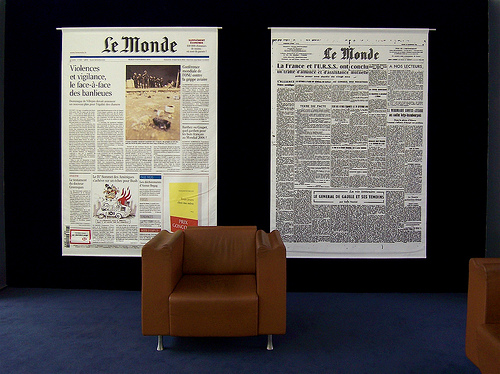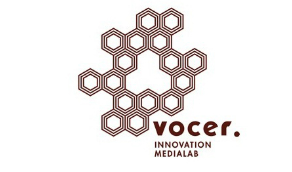The continuing transformation of journalism not only affects journalists, technologists and media managers. It also presents a challenge for journalism scholars: How can theory keep up with practices that are changing so fast and so dramatically?
A special issue Digital Journalism tries to tackle this challenge by providing an overview of contemporary strategies that theorize the digital transformation of journalism.
Steen Steens and Laura Ahvam, the editors of the special issue, Theories of Journalism in a Digital Age, assess changes in theoretical approach. They analyze keywords and abstracts in two leading publications dedicated to journalism studies, Journalism—Theory, Practice and Criticism and Journalism Studies and detect a “broad paradigmatic change since 2000 from perspectives of political science to sociological perspectives.”
The number of articles using a political science approach has declined
In 2002 and 2003, 32 percent of all articles in the journals used a political science approach. In 2012, their share fell to 25 percent. During the same period sociological perspectives increased from 26 to 34 percent.
However, the authors also emphasize that there’s an “increasing variety of theoretical approaches.” The keyword analysis, for example, showed that out of the 445 clustered keywords, more than half only appeared once. Of course, this might also indicate a greater variety in topics not just in theories, but the keywords serve as valuable proxies for identifying larger trends.
Sociological and philosophical perspectives are becoming more important
While philosophical approaches amounted to only one percent of all the articles, Steens and Ahva underscore that “philosophical perspectives (e.g. ethics and objectivity) are becoming increasingly more important.” They are often part of sociological studies. Another general trend in the journals, according to the authors, is the growing importance of theory even if they acknowledge that “grounded theory is still the most dominant approach.” By grounded theory they mean “a research stance that emphasises the role of empirical material as the basis of building theory.”
Actors and Networks
Growing interest in sociological approaches, as noted by Steens and Ahva, clearly shows in the special issue of Digital Journalism. And within these sociological approaches it is actor-network theory (ANT) that has the strongest following in this issue. Four contributions explicitly make a case for using ANT in order to conceptualize the changing character of journalism and news production. They also share a common line of critique: journalism studies, they argue, focus too much on what journalists do instead of examining the practice of journalism in a more holistic way that includes technology, business interests and audience feedback.
Seth Lewis and Oscar Westlund argue that much of recent scholarship has given “greater emphasis to human-centric considerations—such as individual role conceptions, organizational constraints, professional norms, national culture or ideology, and other socio-cultural factors—without sufficiently acknowledging the distinct role of technology and the inherent tension between human and machine approaches.” In contrast, they encourage researchers to look at a bigger variety of elements in news production.
To paraphrase their credo: Look at different actors like IT specialists and businesspeople not just journalists. Pay attention to “actants,” which ANT defines as “material objects that are notable for their association with human actors and the activities they undertake in conjunction with such objects.” Consider various conceptions of the audience: “passive recipients,” “statistically aggregated commodities,” “active participants”. And finally, think differently about activities. They might not just be as routinized and ideological as some traditional models assert.
Bringing Technology Back I
Their approach is reflected in three other contributions. “Journalism,” Alex Primo and Gabriela Zago write, “is not a tag that may be attributed to some texts and images. Instead it is a momentary process that takes place while specific associations are maintained. In other words, nothing is journalism per se. Journalism happens. Journalism becomes.” Of particular importance when examining the practices of journalism, they argue, are technological artifacts. They “have been treated as intermediaries in journalism—carriers that can be used to enhance each step of journalistic routines. But, under certain circumstances, technology can act as a mediator, transforming the news process.”
This interest in the material nature of journalistic objects is shared by Juliette De Maeyer and Florence Le Cam. Using their studies about two specific objects (the blog, the hyperlink) they aim to demonstrate the material traces of digital journalism as well as deconstruct the “rhetoric of disruption,” the claim that changes in contemporary journalism are unprecedented. They describe their research approach as a “hypothetical-inductive path” and characterize it in this way: “determining how objects are parts of a series and analyzing metajournalistic discourses to retrace each object’s history on an empirically grounded basis.”
David Domingo, Pere Masip and Costera Meijer echo other contributors’ embrace of ANT and lay out a research program that focuses more on networks and less on institutions. “As researchers, we need a theoretical framework that enables us to problematise and trace the diversity of actors involved in changing news production and news use, people’s expectation regarding what is news and who is entitled to produce it, their decisions regarding who they trust as news sources, their motivations and practices in the production of news, and their power relationships in the processes of the circulation of news.”
Pic credit: Flikr: Kate Ter Haar
Tags: Digital Media, digital news, Journalism, Journalism Education, Media research, New media, New technology, Online journalism












































